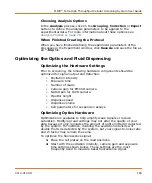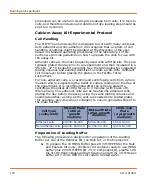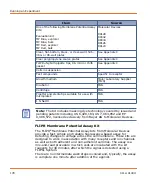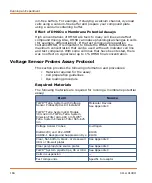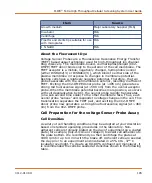
Running an Experiment
176
0112-0109 H
Troubleshooting Guide
This section presents solutions to problems that users may encounter
when running calcium flux assays.
Fluorescence Drop Upon Compound Addition
This may be the result of dislodging cells from the well bottom during
addition. Lowering the addition/dispense speed or adjusting the
addition height or both should solve the problem in this case.
Another potential reason is the dilution of the non-fluorescent
compound into a plate with media containing fluorescent components
(like DMEM media). This Ca4 kit mediates this issue compared to earlier
developed Ca-kits.
Adding volumes greater than recommended may increase the initial
fluorescence drop. In these cases it may be necessary to adjust the
volumes of the components. The recommended volume of the Loading
Buffer is 100
μ
L for 96-well plates, 25
μ
L for 384-well plates and 2
μ
L
for 1536-well plates.
CAUTION!
Decreasing the final in-well concentration of the Loading
Buffer may decrease the response of the assay. If only one addition is
required, then adding a higher concentration of compound in low
volume could help reduce any fluorescence drop upon addition.
Serum-Sensitive Cells or Targets
Some cells are serum-sensitive resulting in oscillations of intracellular
calcium that could interfere with results. Also, some target receptors or
test compounds may interact with serum factors. In these cases,
serum-containing growth medium should be removed prior to addition
of loading buffer. The volume of growth medium removed should be
replaced with an equal volume of 1X HBSS plus 20 mM HEPES buffer
before loading. Alternatively cells could be incubated overnight in lower
concentrations of FBS and not washed prior to the addition of Dye
Loading Buffer.
Cells with DMSO Show a Calcium Response
Buffer used for the negative control wells should contain the same final
concentration of DMSO as is present in the wells containing the test
compounds. However, this concentration of DMSO could cause a
calcium flux. In these cases, add DMSO to the Loading Buffer such that
the final concentration of DMSO in the wells does not change after
buffer addition.
Summary of Contents for FLIPR Tetra
Page 1: ...FLIPR Tetra High Throughput Cellular Screening System User Guide 0112 0109 H December 2011...
Page 12: ...Contents 12 0112 0109 H...
Page 16: ...System Overview 16 0112 0109 H...
Page 40: ...System Hardware Features 40 0112 0109 H...
Page 148: ...Exchanging Hardware 148 0112 0109 H...
Page 156: ...Calibration and Signal Test 156 0112 0109 H...
Page 196: ...Running an Experiment 196 0112 0109 H...
Page 232: ...Robotic Integration 232 0112 0109 H The following drawings illustrate these requirements...
Page 282: ...Data Processing Algorithms 282 0112 0109 H...
Page 294: ...Consumables and Accessories 294 0112 0109 H...
Page 298: ...Using AquaMax Sterilant 298 0112 0109 H...
Page 302: ...Electromagnetic Compatibility EMC 302 0112 0109 H...




